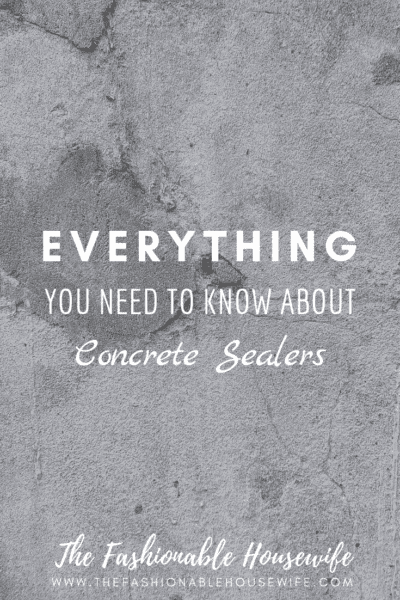
The lifespan of sealers is usually based on the type of sealer material used, environmental conditions in which the sealer is expected to perform, and how it was applied.
Generally, there are seven kinds of concrete sealer and they are the following:
? Silicate: This is the kind of sealer that will last a lifetime. This sealer undergoes a chemical reaction wherein a hydrating barrier made of calcium silicate is produced to bond with concrete. This can only be removed when the concrete is also removed.
? Silane Siloxane: This kind of sealer can last between seven (7) to ten (10) years. The sealer “bead” may wear off between two (2) to twelve (12) months, but silane siloxane will still work for ten years.
? Silicone: This can also last within seven (7) to ten (10) years.
? Acrylic: This can last between one (1) to five (5) years only. To bring back its luster, you have to recoat the sealed surface.
? Epoxy: You can keep your surface safe for five (5) to ten (10) years before you need to recoat.
? Urethane: Just like epoxy, this can last for five (5) to ten (10) years before you need to recoat.
? Paint: A numerous factors like environmental conditions, area coated, exposure to chemicals, and so on must be taken into consideration, depending on which the apt paint can be decided upon.
What Factors Determine the Lifespan of a Concrete Sealer?
These are some of the factors that dictate the lifespan of most sealers:
? Quality of Applied Product: Not all sealers are equal. So, if you expect a longer shelf life, you have to choose one which has higher quality. Everything from sourcing of raw materials, down to percent solids, can impact the performance of your sealer.
? Coats Applied: Most sealers only require two coats to reach the surface’s full life expectancy. If you only apply a single layer or if you overapply it to the surface, chances are, the sealer will fail to reach its full life expectancy.
? Product Application: Another factor that can decide the lifespan of your sealer is the manner of application of the product. While some sealers are applied through spraying, others need a roller for proper execution. If you use a roller to apply a penetrating sealer, there is a high chance that you won’t spread an equal amount on the surface.
? Substrate condition: Issues related to the substrate can significantly shorten the life expectancy of your concrete sealer. Moisture, water, old sealer, and deterioration can all reduce your sealer’s life span.
? The environment where you applied the product: If you used the sealer in the middle of a hot day, the sun can cause damage to the surface. On top of that, the heat can cause the sealer to quickly evaporate, leaving coating and sealer issues to the surface. If you apply it after a storm, you will also experience coating and sealer issues.
? Sealer suitability: If you use epoxy coating or urethane on exterior bricks, chances are, your project will fail. Also, if you use silicate to stone, you’re bound to see white crystals form on the sealed surface. Each sealer has specific uses. Applying it to surfaces outside their right uses can lead to coating or sealer failure.
To get help and expert advice on stamped concrete or any of your sealer needs, contact Contractor Source, LLC today. You can talk to their representative either by phone (1-888-263-5895), by email (cs@walttools.com), or through their website.



